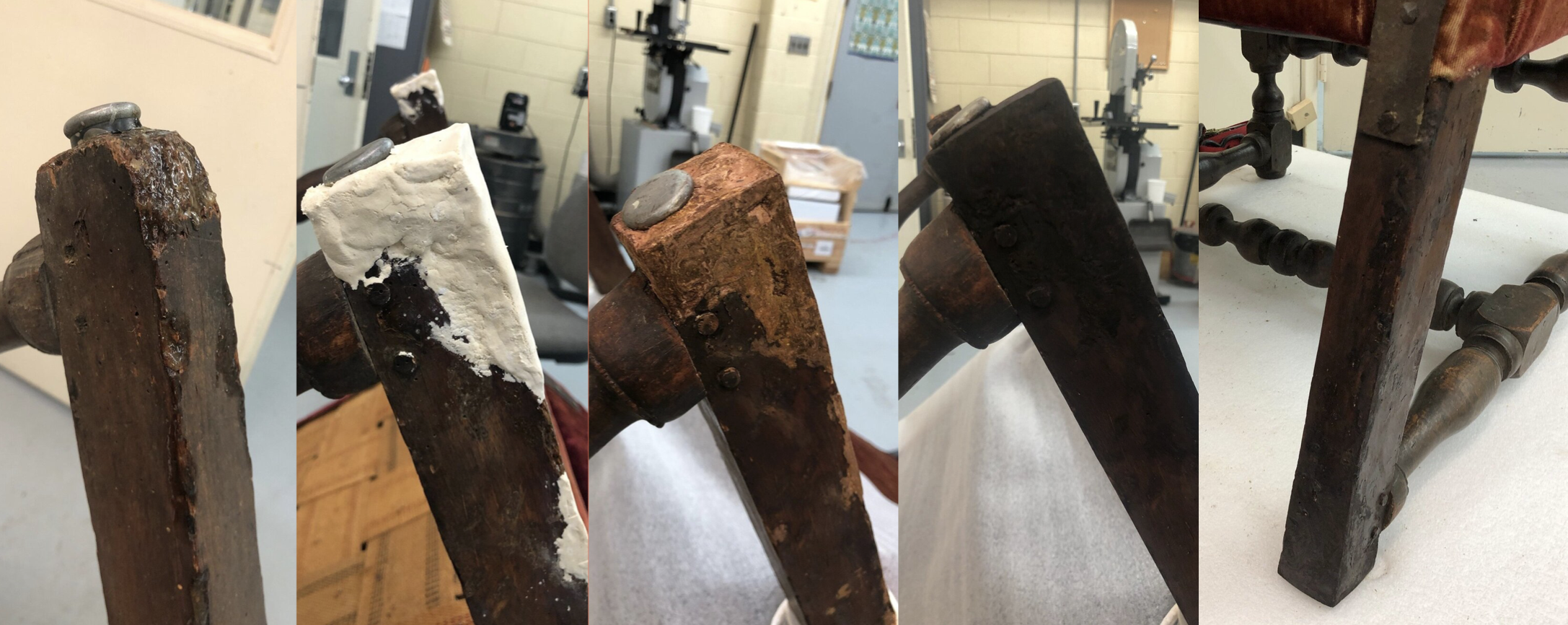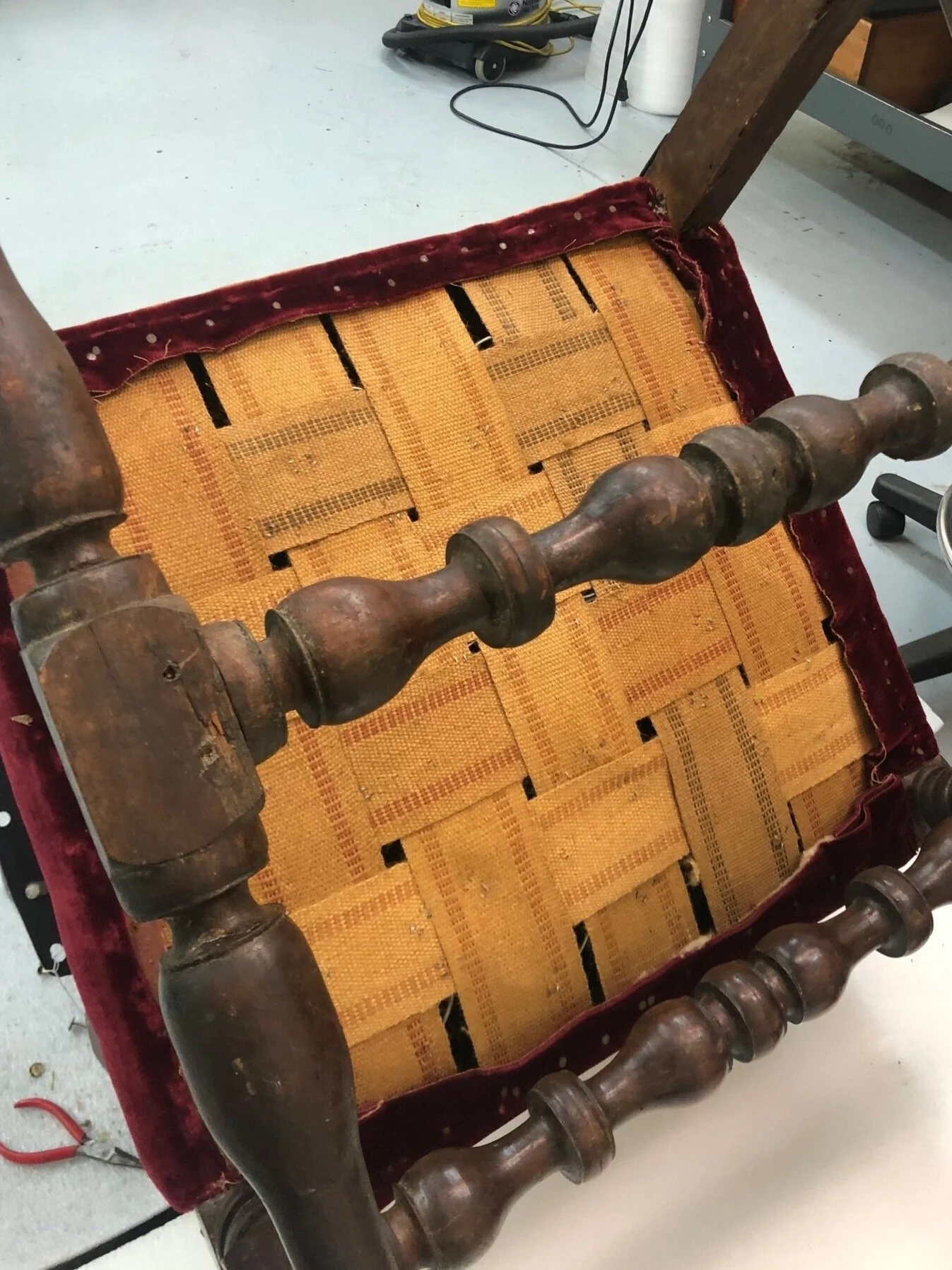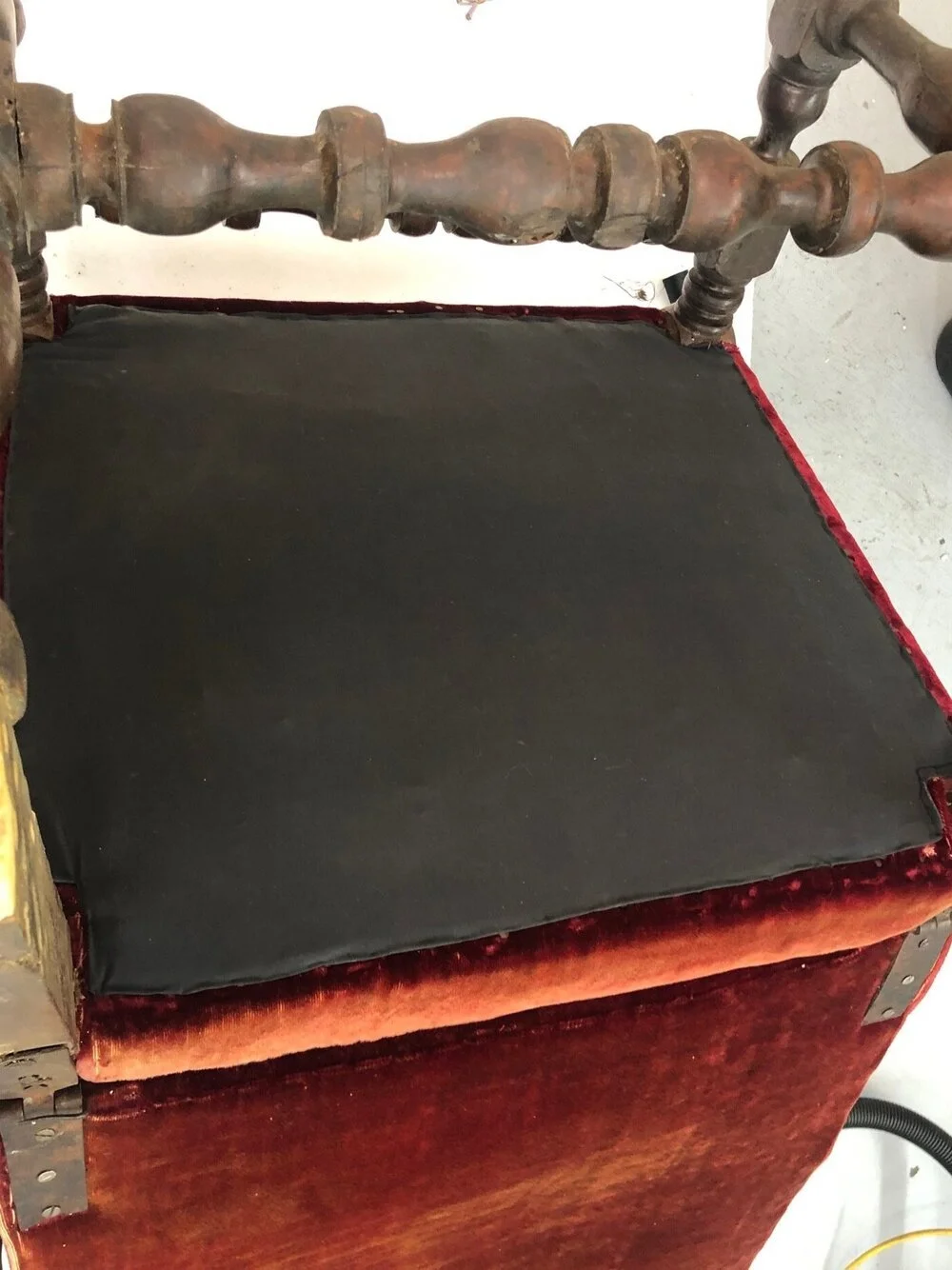Samuel Yellin Reclining Armchair
(Object ID: 2021.52.1)
Project Duration: 32 hours
Date: 1650-1700
Dimensions: L: 410mm W: 330mm D: 140mm
Materials: Wood, textile, iron
Object Description:
This chair documents the creativity and originality of a master in American metalwork, who created a comfortable chair for his own use. Samuel Yellin’s prolific output of metalwork may be seen in historic houses and museums from coast to coast. He produced little furniture and related household fittings. I was able to locate one bed and a few tables that he designed, as well as a group of fireplace screens.
According to the donor, she purchased the chair from Clare Yellin, Samuel’s granddaughter and proprietor of the Yellin Studios, in the early 1990s. Ms. Yellin told the donor that it had been used by Mr. Yellin at his home in Wynnewood, Pennsylvania until her father, Harvey Yellin (1918-1985) inherited it in the 1940s. After Harvey Yellin’s death Clare Yellin inherited it and eventually sold it to the donor.
Condition:
Dust is lightly present on wood and textile surfaces. The reupholstered velvet is red in color but has begun to fade in select locations, mostly on the edges. The dust cover of the chair is missing; fragments of dark coloured textile remain at each corner of the underside of the chair. Pins are exposed through the jute webbing.
One nail is missing on the back hinge of the recliner and needs to be replaced to maintain structural integrity. The simple back legs of the chair (which appear to be later additions made to the original chair by Samuel Yellin) have suffered extensive damage from insects. The ends of each back leg - approximately 2 inches in depth) have been completely eaten away by insects. The metal base glides on the bottom of each leg remain intact, showing the amount of wood loss that has occurred. Additional pitting is present throughout the legs - but less severe - and can also be seen in select locations on the original oak of the front of the chair.
Treatment Performed:
Missing nails on the hinges were replaced with similar hardware to ensure stability of the object. Using Abatron WoodEpox (2 part epoxy wood replacement compound), the voids on the legs and decorative elements of the chair were filled. Once fully dry after 10 days, all fills were sanded to shape. Using a combination of Dr. PH Martin’s Synchromatic transparent watercolor and Winsor and Newton artist grade watercolor, the fills were painted to match the coloration of the original wooden elements of the object. A varnish (composed of a mixture of Cabosil fumed silica powder and Liquitex soluvar matte varnish) was applied to the painted fills to prevent any fading or damage to the watercolor.
All surfaces were vacuumed using a HEPA grade vacuum. To prevent the formation of dust and the exposure of pins and nails, a new dust cover was created for the chair. Composed of black, cotton fabric, the piece was cut and hand-sewn using a curved needle to the underside of the chair.





